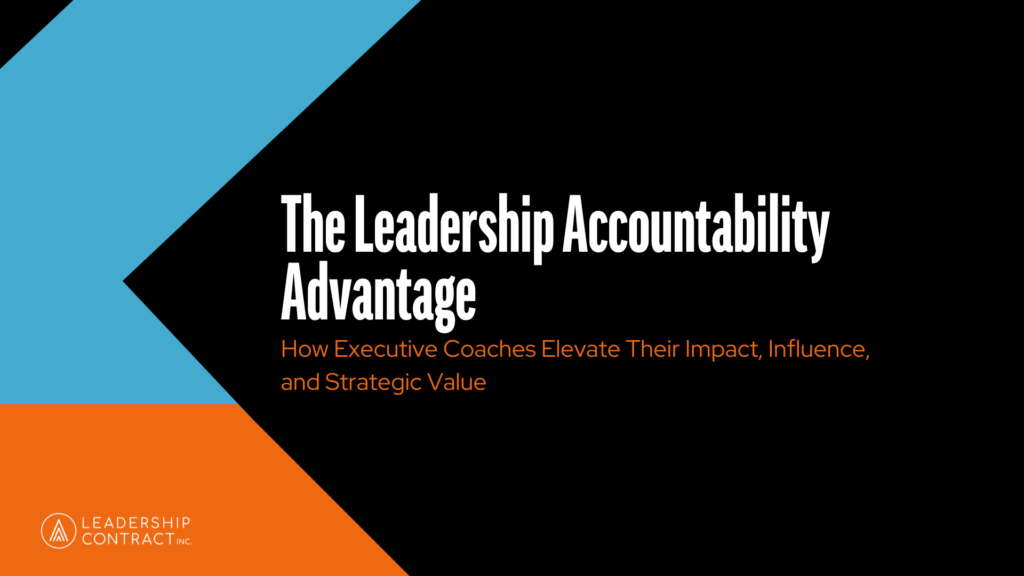Note: A version of this was previously published on Forbes.
I recently had a conversation with a new CEO. We were discussing the immediate challenges she faced in her organization.
Her biggest concern was with her extended leadership team—the most senior leaders in the company. In her short time with the organization, she observed that many senior leaders were working at cross-purposes with each other, operating in silos and engaging in an internal competition that hindered progress.
One thing became abundantly clear to her: “We need to align and engage our top two layers of leadership with our strategy and ensure their full commitment to becoming the best leaders possible. If we achieve this, it will be our secret sauce, our competitive edge in the market,” she shared.
She is not alone in this belief. An increasing number of CEOs I work with recognize the importance of building a strong extended leadership team. But what does that mean? Let’s explore that in this article.
However, before we delve into it, let’s dispel some conventional wisdom that emphasizes the executive team as the most important team in an organization. While it’s true that the executive team bears ultimate responsibility for setting the company’s direction, making critical decisions and ensuring overall organizational success, today’s dynamic and complex business landscape requires organizations to adapt, innovate and execute strategies effectively.
In this context, the extended leadership team plays a vital role as the backbone of a company’s success. Typically, the extended leadership team consists of the direct reports of executive team members. Depending on the company’s size, this team can comprise 30, 50, 100 or even 300 leaders.
In my experience, I’ve discovered that the extended leadership team is the most important in a company.
When functioning optimally, this team focuses on the following critical areas.
- Bridge strategy and execution.
The extended leadership team acts as a bridge between high-level strategy and operational execution. They translate the organization’s vision into actionable plans, ensuring the effective implementation of strategies across departments and functions. By aligning diverse teams towards common goals, the extended leadership team can drive efficient execution of strategic initiatives and maintain focus on long-term objectives. - Set the tone of accountability.
As I wrote in one of my books, accountability breeds accountability. When the most senior leaders of a company set the tone and serve as an example of accountability, then other employees will mirror their behavior. - Drive operational excellence.
A strong extended leadership team brings together leaders from different departments and functional areas. This diversity of expertise enables effective collaboration and integration throughout the organization. By working together, these leaders foster operational excellence, streamline processes and optimize resource allocation. They should identify areas for improvement, address bottlenecks and cultivate a culture of continuous improvement across the company. - Achieve cross-functional collaboration.
The extended leadership team catalyzes cross-functional collaboration and innovation by leveraging the unique expertise across a company to develop creative solutions and drive positive change. Additionally, make sure the extended leadership team champions new ideas, facilitating their implementation and ensuring that innovation becomes embedded in the company’s DNA. - Shape culture and lead change.
Change is inevitable in today’s business landscape, and the extended leadership team plays a critical role in managing and navigating transitions. They should effectively communicate changes, mitigate resistance and ensure smooth transitions for employees. By fostering open communication, transparency and employee engagement, the extended leadership team can help build a positive and adaptable organizational culture that supports growth and resilience. - Develop future leaders.
Another crucial aspect of the extended leadership team is its role in developing future leaders and cultivating a robust succession pipeline. By identifying high-potential individuals within their teams, these leaders invest in talent development, mentorship and skill enhancement. They can create growth opportunities, empower emerging leaders and ensure smooth leadership transitions. This focus on leadership development strengthens the company’s long-term sustainability and its ability to navigate future challenges.
How does your company’s extended leadership team stack up? Are you confident you have the best-extended leadership team in your industry? And is this team creating a competitive edge for your company?








